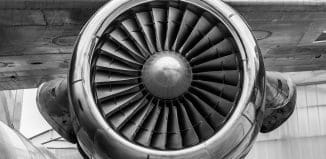Will RPAS Replace Helictopters As Well?
This post is also available in:  עברית (Hebrew)
עברית (Hebrew)
Remotely Operated Aircraft Systems (RPAS) offer new opportunities for helicopter operaters and some in the aerial industry in Europe propose to add them to their air fleet, as they can accomplish tasks that current aerial vehicles can not.
The helicopter operators’ reactions to this proposal vary. Some claim that it would be too hard to execute the idea and therefore it is not applicable. Others, however, support the idea, like the manager of Air Marine, a company located in France that operates, among other things, airplanes and RPAS for surveillance and reconnaissance. According to him, more and more videos that include aerial ground footage are being taken by RPAS, which will eventually replace manned aerial vehicles for this task altogether. However, he pointed out that helicopters will never be replaced since there’s no replacement for the human brain in estimating the big picture.
Some think that UAVs could replace helicopters only on limited missions such as reconnaissance due to their limited flight endurance. Dominique Orbec, president of French helicopter lobbying association UFH, sees RPAS as a complement rather than a replacement for helicopters. A Helicopter, for instance, is not a suitable platform to take close-ups of an architectural object and a UAV would actually suit the mission better.
Other arguments suggest that UAVs can be used to search and rescue missions in place of helicopters. Gerold Biner, a pilot and the CEO of Switzerland-based Air Zermatt who specializes in rescuing in mountain terrains, sees RPAS as a potential tool for mountain missions. He believes that this option will allow to avoid risking the lives of pilots and field guides by operating these systems in severe weather and at nighttime. But not everyone agress with him, claiming that a rescue UAV could never be preferable to a helicopter carrying a doctor inside.
It should be pointed out that RPAS have operational flaws. One of those is the distance challenge. Since RPAS have limited flight endurace, the vehicle must be carried relatively close to the area of the incident before it is clear where he could take off. Another challenge is cost. Although some RPAS are lighter in weight and less expensive, they offer limited endurance and payload. Finally, the security matter must be emphasized. It is estimated that the rate of accidents in RPAS is one in every 20 hours of flight. An example for such safety issues was an incident where four UAvs took off during a protest along with a helicopter that rose in the air for media coverage, but since the pilot was unaware of the UAVs taking off, he was forced to change course in order to avoid collision.
It seems UAVs are being used in more and more missions in the flight field, even if in small, hesitant steps. It’s interesting to see which other platforms the UAV could replace in the future. With technology advancing as rapidly as it does, it doesn’t seem like we will have to wait too long to find out.





























